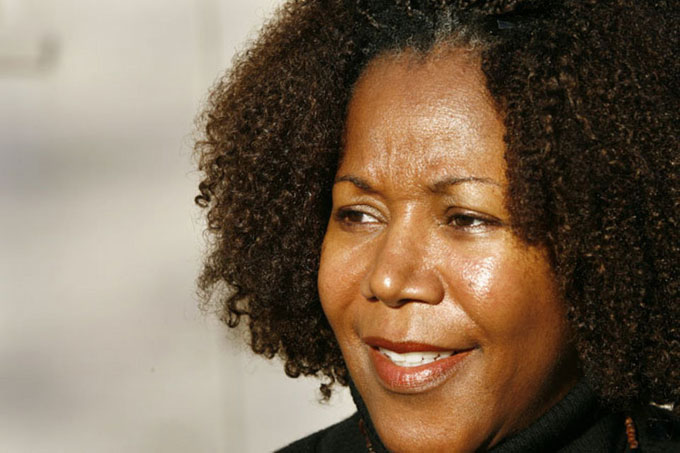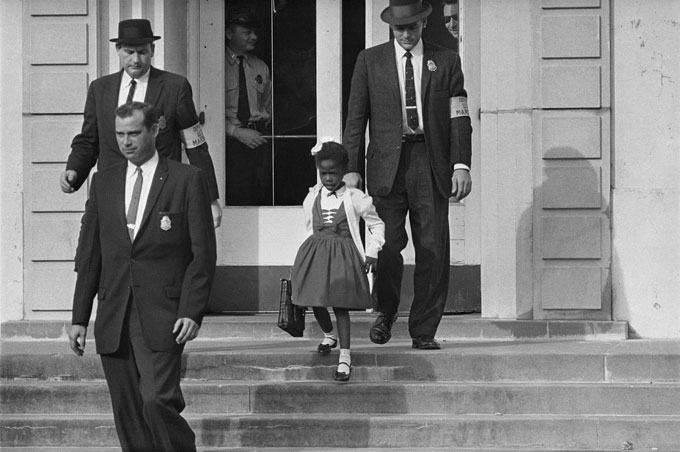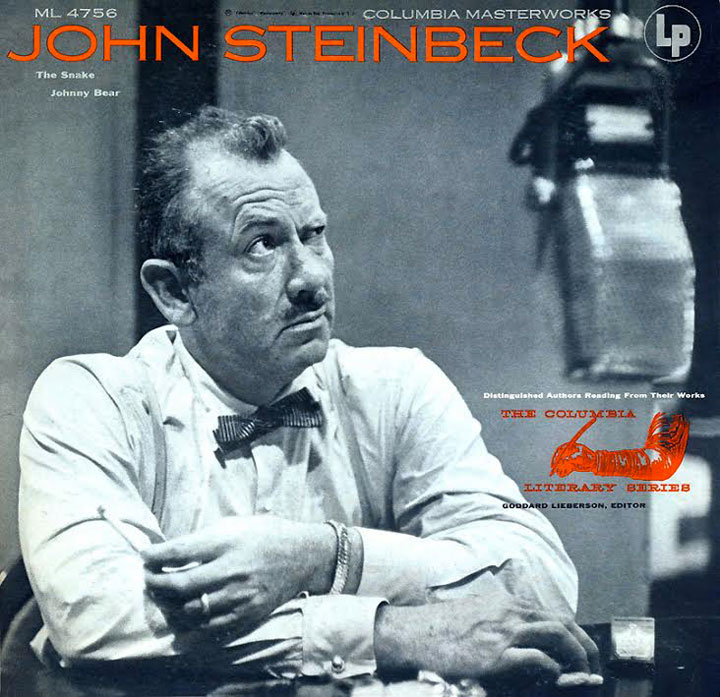Near the end of Travels with Charley, John Steinbeck celebrates the inspiring courage of Ruby Bridges, the six-year-old schoolgirl who advanced the cause of civil rights by breaking the Southern segregation barrier at a New Orleans elementary school 56 years ago. San Jose State University will honor Bridges’s lasting contribution to civil rights on February 24 by conferring the Steinbeck “In the souls of the people” Award—a program of the school’s Martha Heasley Cox Center for Steinbeck Studies—on the 61-year-old author, activist, and advocate, who has been called the first foot soldier in the modern civil rights movement.
Steinbeck wrote Travels with Charley in sadness, and occasional shock, at the state of America in 1960, when he was 58, and he chose the South as the last stop on his journey of rediscovery and reconciliation because he recognized racism and civil rights as the fundamental conflict to be resolved if the country he loved was to survive. Watching grown white women curse the diminutive black girl entering William Frantz Elementary School in New Orleans turned his stomach, as it did Americans reading newspaper accounts of the widely reported event. Though Ruby Bridges isn’t identified by name, Travels with Charley captures her image, braving the kind of mob Steinbeck depicted better than anyone, like a contemporary news photograph:
The big marshals stood her on the curb and a jangle of jeering shrieks went up from behind the barricades. The little girl did not look at the howling crowd but from the side the whites of her eyes showed like those of a frightened fawn. The men turned her around like a doll, and then the strange procession moved up the broad walk toward the school, and the child was even more a mite because the men were so big. Then the girl made a curious hop, and I think I know what it was. I think in her whole life she had not gone ten steps without skipping, but now in the middle of her first skip the weight bore her down and her little round feet took measured, reluctant steps between the tall guards. Slowly they climbed the steps and entered the school.
Thanks in part to Travels with Charley, Ruby Bridges became an icon of civil rights for succeeding generations—a platform she has used brilliantly as a writer and speaker to advance the values of tolerance, understanding, and equality embraced by Steinbeck in his time. “John Steinbeck expressed concern over an injustice and wrote sympathetically of me when I was a young girl,” she explains. “In a way, we’ve come full circle. I now get to honor him by receiving an award bearing his name. I’m so proud to be part of this.”
Ruby Bridges will speak and accept the Steinbeck Award a public event—“An Evening with Ruby Bridges”—beginning at 7:30 p.m. on February 24 in San Jose State University’s Student Union Theater on the school’s downtown San Jose, California campus. Tickets are available at the Event Center Box Office (408-924-6333) or at Ticketmaster.com.





Thanks for this post, Will. I encourage readers to spread the word in the Bay Area and beyond about this important event.
Nick Taylor is a novelist, faculty member, and director of the Martha Heasley Cox Center for Steinbeck Studies at San Jose State University.
This of course brings to mind Norman Rockwell’s also very brave painting of Ruby and the marshals marching to the school, “The Problem We All Live With.” It, too, did so much to break down barriers – here was the most Amercan of artists recreating the moment in the most powerful and touching imagery. Did Rockwell and Steinbeck know each other? If so, they must have spoken of Ruby Bridges.
Steve Hauk is a writer and art expert in Pacific Grove, California.
Thanks for this post, Will! Ruby Bridges’ story of lifetime commitment and the connection between her and Steinbeck is one I’ll share.
Kathleen Burgess is a poet and nonfiction writer in Chillicothe, Ohio.
This is a remarkable event, a once in a lifetime experience. Ruby Bridges’s journey continues in the sunlight of a country that John Steinbeck helped create. Congratulations to the Center for Steinbeck Studies, and to Ruby Bridges.
I should have included in my comment this history of Rockwell’s painting of Ruby Bridges’s ordeal –
https://en.wikipedia.org/wiki/The_Problem_We_All_Live_With
This article has some interesting comments about JS and NR
http://kenlairdstudios.hubpages.com/hub/The-Problem-We-All-Live-With—Norman-Rockwell-the-truth-about-his-famous-painting
Herb, thanks for directing us to this fine essay on Rockwell and this very important painting. It also includes more on Steinbeck negotiating a dangerous – then – New Orleans. The comment I disagree with is Rockwell for so long taking the conservative path – yes, generally, but if you study his images you can often make out subtle visual criticism. One other comment, this one that I agree with – Rockwell being on the outs with the new art movements. True, and this is one of the things that has always irritated me about the art world, this attitude. It has resulted in many destroyed careers, artists no longer feeling relevant – as well as alcohlism and probably some suicides. I don’t think the literary world is as bad in this regard. I hope it isn’t. Anyway, a great and very brave painting whatever the style.
I wonder if the literary world isn’t just as bad as the art world, Steve. Literary agents, always fearful of making a mistake, no longer accept unsolicited manuscripts from unknown or little-published writers. The procedure today is to allow universities to determine a writer’s worth via the MFA program. That, and the many lucrative conferences they organize every year. It takes more than a garret, a computer, and the madness of one’s creative drive to unlock those doors of Oz today. It takes money, lots and lots of it, to get through four grinding years of university (learning more and more about less and less) and another one or two years of postgraduate study (honing up on less and less) for a writer to earn those magic initials. I wouldn’t be one bit surprised if universities begin awarding posthumous degrees to John Steinbeck and William Faulkner and Ernest Hemingway and D.H. Lawrence — and perhaps even to the likes of William Shakespeare — in an attempt to give any meaningful substance to the MFA degree. Destroyed careers, alcoholism and possibly some suicides? You bet. How could it be otherwise?
Here are some interesting comments about JS and NR:
http://kenlairdstudios.hubpages.com/hub/The-Problem-We-All-Live-With—Norman-Rockwell-the-truth-about-his-famous-painting
In regards to the Ruby Bridge story, I submit it is only half complete. I quote from “Travels With Charley:”
“…but this was not the big show. The crowd was waiting for the white man who dared to bring his white child to school. And here he came along the guarded walk, a tall man dressed in light gray, leading his frightened child by the hand. His body was tensed as a strong leaf spring drawn to the breaking strain; his face was grave and gray, and his eyes were on the ground immediately ahead of him. The muscles of his cheeks stood out from clenched jaws, a man who by his will held his fears in check as a great rider directs a panicked horse.
Need I say more?
The printed version of this was much milder than the original text, which included many of the obscene language. Bill Steigerwald notes this in his book, Dogging Steinbeck. In a letter here is what Steinbeck wrote:
What has happened here [censorship in Travels With Charley] is what has happened all over the America. Caution is King. What started out as a simple piece of truth now wears all the clothing of sensationalism and has lost every vestige of its purity. It doesn’t feel clean to me any more. The only value of the passage lay in its shock value. Now it has become that book with the dirty words and by a magical turnabout the dirty words are no longer the cheer leaders but mine. When I get the galleys I shall see what I want to do. I know that by simple suggestion I can make them much uglier without saying them.
– Steinbeck: a Life in Letters, Elizabeth Otis, 2/1/62, Capri, 733, 734